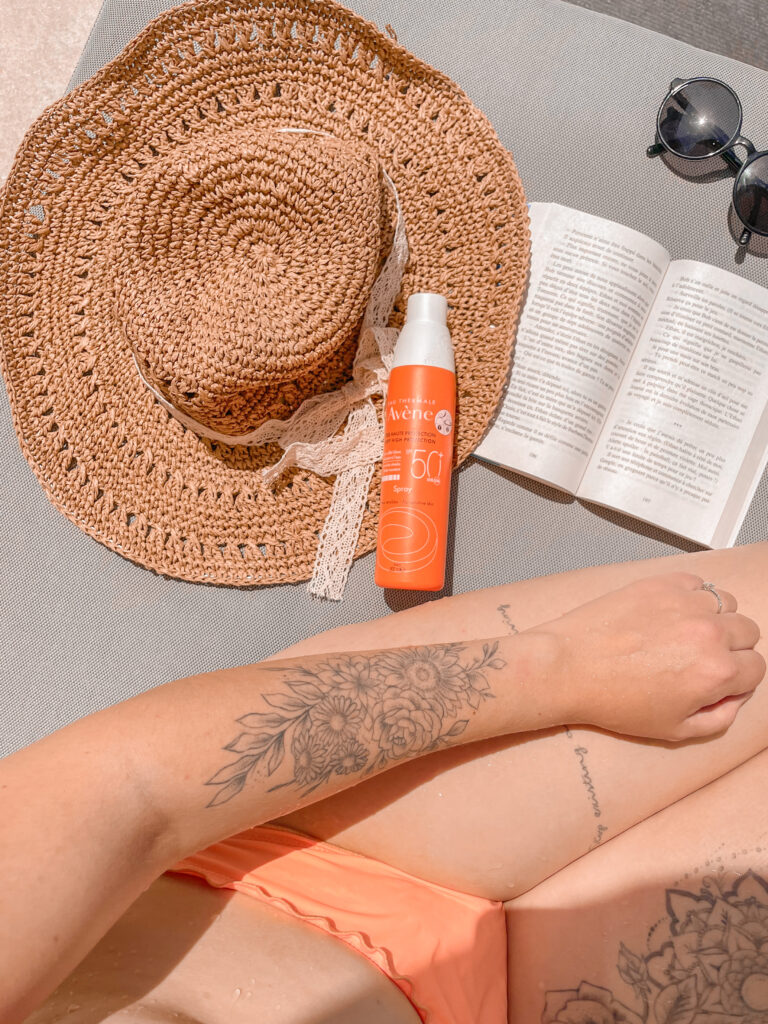Aftercare
❊❈ The tattoo artist’s work is complete, and now it’s your turn to take over! ❈❊
The care and precautions to be taken on the tattoo are as important as the act of tattooing itself. If you have any questions, don’t ask on a forum, go directly to the tattoo artist and follow his advice.
Your skin has just undergone a superficial but still significant injury, making it susceptible to complications if exposed to irritation or infectious elements. Touching a freshly tattooed skin with dirty hands, immersing it in the sea or pool, or wearing wool or nylon clothing are examples of activities that can jeopardize the proper healing of a tattoo.
The first few hours
The tattoo session is complete, and a bandage is applied after the tattoo. The duration for keeping the bandage on will be indicated by the tattoo artist (generally recommended keeping it on for at least 2 to 6 hours, with the aim of stopping any bleeding completely). Afterward, the tattoo should be cleaned gently with warm water and mild soap. It is preferable to leave the tattoo uncovered, without applying a new bandage.
IT’S RED, IT’S SWOLLEN, IT’S PAINFUL => IT’S NORMAL.
It is possible to experience a slight fever on the first evening, which is not a cause for concern as the body has experienced a skin injury. If symptoms persist, it is important to contact your tattoo artist and seek medical advice.
The first month
It is recommended to use a moisturizing cream rather than a healing ointment. Apply the cream as often as necessary throughout the day, never leaving the tattoo without cream.
Hygiene and precaution
Remember that maintaining proper hygiene for the tattooed area is important for good healing. Leaving the wound without cleaning for several days increases the risk of infection.
Avoid touching the tattooed area with dirty hands, and make sure to wash your hands before applying any products to the tattooed skin.
Avoid activities such as baths, swimming pools, steam rooms, and the sea during the healing period.
Also, refrain from exposing the tattoo to sunlight and UV rays in tanning salons for at least a month. Sun exposure is one of the worst enemies of a tattoo. Besides the risk of sunburn, hyperpigmentation can cause irreversible brown spots when the skin is in the process of regeneration. Additionally, the tattooed skin is more sensitive to UV rays and prolonged exposure can fade the ink, sometimes almost erasing the tattoo after several years. Any sun exposure is prohibited during the first month after getting the tattoo. Afterward, lifelong protection with a high SPF sunscreen (SPF 50+) should be applied.

Furthermore, try to minimize contact with dust and avoid touching the tattooed area with your own hands or others’ hands.
Itching, often inevitable, is a common part of the healing process. Despite the temptation, it is crucial to refrain from scratching or rubbing the tattooed skin. Dead skin should naturally shed off to avoid any unwanted scarring. Otherwise, scratching can damage the tattoo and cause noticeable flaws, potentially requiring a touch-up session with the tattoo artist.
To alleviate itching, gently dab the tattooed area with a cold, damp cloth or an ice pack.
Lifelong care
Once the tattoo has completely healed, you can “forget” about it. However, taking care of the skin that carries the tattoo, through regular moisturization and maximum sun protection, will help it age gracefully.
Healing follow-up
To follow up on the healing process, please send an email to retouchestattoo@gmail.com
Once your tattoo has healed, don’t forget to send a photo of the tattoo.
